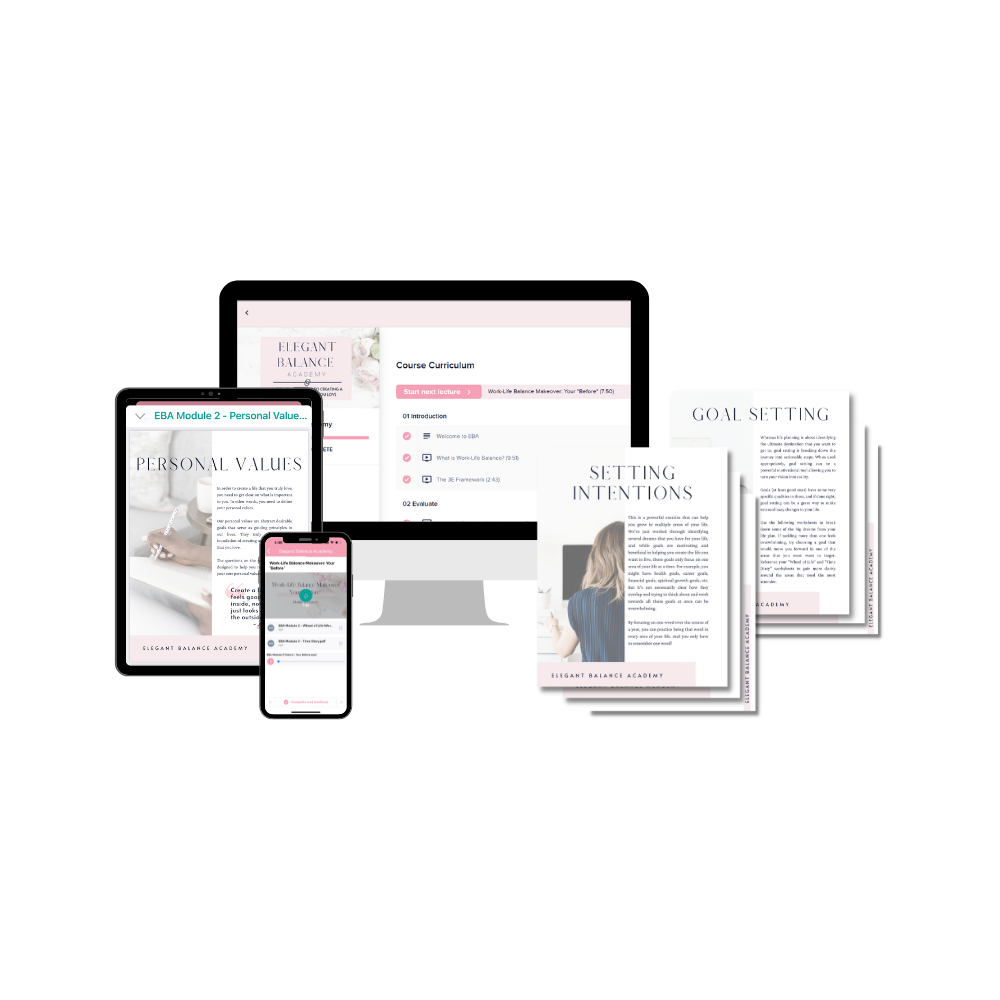Designing Your Dream Job: The Art of Job Crafting
“Just because it suits someone else doesn’t mean it will suit you as well. Tailors were made for a reason.”
Prefer to listen?
Think about your favorite dress – the one that fits you like a glove, hugging you in all the right places, and makes you feel confident and powerful, ready to conquer world. Now, imagine having that same feeling, but with your job. What if your job could be tailor-made for you? What if it was designed to align with your strengths, interests, and values? That's what job crafting is all about.
Job crafting is the process of reshaping your job to fit you better. It’s taking the generic job description that’s associated with your job and tweaking it until it fits just as well as that dress. It's about taking intentional steps to make your job more personalized, more meaningful, and more enjoyable. In the past few weeks, I've been reflecting on my own career and the steps I've taken to create the work-life balance that I have today. One aspect that kept coming up, time and time again, was job crafting. I realized that over the past few years, by taking intentional steps in my career, I have been able to craft a job that is personalized to me.
In our society, we love to personalize things – our phone cases, coffee mugs, laptops, even our cars. Research suggests that as consumers we not only love personalization but demand it. And yet, many of us haven’t even considered the fact that we could personalize something that we spend a significant amount of our time (one of our most valuable resources, by the way) doing – work.
We’ve spent a lot of time here on this podcast discussing work-life balance, but I think it’s important to bring it up again to help you see how job crafting fits into the picture. We feel more balanced when we are engaged in roles and taking on responsibilities that we feel competent and satisfied in and that are aligned with our personal values. If you’re reading this, I’m assuming that you are a high-achieving professional woman who knows exactly how challenging it can be to balance work and everything else. You want a job that's fulfilling and enjoyable, but you also want to be able to spend time with your loved ones or do things that you’re passionate about. That's where job crafting comes in. Job crafting can be especially beneficial as it allows us to create a job that fits our needs and goals, leading to better work-life balance, improved mental and physical health, increased productivity, and the potential for career advancement (Wrzesniewski & Dutton, 2001).
In other words, job crafting can help you create a job that aligns with your strengths, interests, and values, making it more enjoyable and less stressful. And when you're happy with your job, it's easier to be happy with the rest of your life.
Types of job crafting
There are three different types of job crafting that can help people reshape their jobs to better fit their strengths, interests, and values. These three types of crafting are:
Task crafting: This involves changing the specific tasks that make up your job, such as adding new responsibilities or eliminating unnecessary ones. For example, you may task craft your job by taking on more projects that align with your interests and passions, or by delegating some of your less important tasks to free up more time for her family.
Relationship crafting: This involves changing the relationships that make up your job, such as building new relationships with coworkers, mentors, or clients. For example, you may relationship craft your job by building a supportive network of other working mothers who can provide guidance and resources as you navigate your career.
Cognitive crafting: This involves changing the way you think about your job, such as reframing negative aspects of your job in a more positive light. For example, you may cognitively craft your job by reframing your long hours as an opportunity to gain valuable experience and advance your career.
All three types of crafting can be used together to create a job that better fits your unique strengths, interests, and values. By using all three types of crafting together, you can reshape your job to be personalized to you, leaving you feeling satisfied and competent in your roles and experiencing increased job satisfaction and a better work-life balance. Who doesn’t want that?!?
You can design a life you love.
A life where work, family, leisure, and rest exist harmoniously.
I want to introduce you to the Elegant Balance Academy: a step-by-step guide to creating a work-life balance you love.
Join the wait list here!
What should we be aiming for when job crafting?
Job design research suggests that the most engaging, satisfying, and motivating jobs are those that provide 3 things to the employees: meaningfulness, autonomy, and feedback. As employees, we want to know that our work matters, we want some level of control over how we do our work, and we want to know how we’re doing. We can keep this in mind as we start to craft our own jobs. We need to consider how we can maximize meaningfulness, autonomy, and feedback and then take the necessary steps to do just that!
So, how do you get started with job crafting?
The first step to simply reflect on your own strengths, interests, and values. Ask yourself, “What am I good at?”, “What do I enjoy doing?”, “What’s important to me?”. The answers to these will be helpful as you start assessing your current job.
Next, take a look at the tasks and responsibilities associated with your job. Are there any that you’re not particularly interested in or (if you’re honest) not particularly good at? This will help you start to identify areas that might need some attention.
In his TED Talk, Rob Baker shares his “Love and Loathe” exercise to help you evaluate your tasks. You’ll need three things: a pen, piece of paper, and some post-it notes. First, you simply write out the key 10-15 tasks that you do as a part of your job on a regular basis on the post-it notes. Next, grab your paper and draw a horizontal line across the bottom of the page. This represents your energy in your job. On the left, write the label “Drains Energy” and on the right, write the label “Gives Energy. Next, draw a line down the middle of the sheet and label it “Time”. Next, grab your post-it notes and plot them on this graph. In doing this, you’re trying to identify different types of tasks that you’re doing in your job. If there’s a group of tasks that take a lot of time and are draining your energy, those would be tasks to consider eliminating from your job description. If there’s a group of tasks that don’t take up a lot of time but give you energy, those are the tasks that you want to keep. You can engage in strategic job crafting from here, armed with a bit of data around your job tasks and the amount of time and energy they use.
Finally, start making changes. This can be a bit tricky, as you may need to communicate your job crafting plans with your supervisor/employer. For example, if you're not particularly interested in a certain aspect of your job, you can try to negotiate with your supervisor to delegate those tasks to someone else. Or, if there's a task that doesn't align with your values, you can try to find a way to make it more meaningful.
You may find yourself managing resistance to change (both from yourself and from others). This is something that often comes up when you're trying to make changes to your job, and its challenging. If you're having trouble getting your employer or supervisor on board, try to find a way to demonstrate how your changes will benefit the company. Or, if you're dealing with resistance from your colleagues, try to find a way to involve them in the process. For example, if you do a lot of team-based work you could host a job crafting session where the entire team sits down together and discusses the aspects of the job that they love and the aspects that they find especially draining. You may find out that one person’s favorite task is another person’s least favorite task. Knowing this, your team can adjust accordingly and will likely experience better productivity and satisfaction moving forward because you’re playing to each team member’s strengths.
Job crafting has its limits
I wanted to note a few caveats to job crafting. It’s certainly not the “golden ticket” that will solve all your work-related problems. It’s simply a tool that can help to make things better at work. According to a recent article on Business Insider, some limitations of job crafting are 1) not everyone has the same freedom or accessibility to job craft, 2) employees might find themselves taking on more tasks for less pay when job crafting, and 3) job crafting won’t fix a work situation that was terrible to begin with. Just some things to keep in mind if you decide to try job crafting for yourself!
In conclusion…
Job crafting is a powerful tool that can help you create a job that's personalized to you. It's about taking intentional steps to align your job with your strengths, interests, and values, making it more enjoyable, less stressful, and more fulfilling. It's important to remember that job crafting is not a one-time event, it's a continuous process that requires ongoing reflection and adaptation (much like our work-life balance journey). Just like our bodies change and we will have to occasionally replace that perfectly fitting dress, we will also grow and change as women and our interests, strengths, and values may shift, meaning that we need to engage in different task, relationship, or cognitive job crafting.
Finally, I want each of you to remember that the purpose behind job crafting is not only making your job better (although that does happen) but it's also about making your life better. When your job is tailored to you, personalized to you and your unique, beautiful strengths and desires, you'll be happier, and that will have a positive impact on the rest of your life.
If you want to learn more about job crafting, check out these resources:
1. What Job Crafting Looks Like – the authors of this piece have been conducting job crafting research for 20 years. Here they summarize how you can get started implementing their findings.
2. Job Crafting – The Power of Personalising Our Work – Rob Baker, author and founder of a positive psychology HR consulting firm, presents a great summary of job crafting. His “tailor-made” metaphor was the inspiration for this blog post!
3. Job Crafting and Creating Meaning in Your Work – Dr. Amy Wrzesniewki, Professor of Organizational Behavior at the Yale School of Management, is a leading scholar in the job crafting space. Here she discusses her research and how you can get started job crafting.
Is a better work-life balance one of your goals this year?
I’ve created a workbook just for you!
If you’re interested in creating a work-life balance characterized by simplicity, joy, and beauty, why don’t you start by checking out my Elegant Balance Workbook? In it, I help you define what work-life balance looks like for you and share some tips on creating that balance. I’ve said it before, and I’ll keep saying it – Balance doesn’t happen by accident.















Sharing this with you makes me smile – I love thinking back to the girl who felt confident and beautiful in that rainbow shirt and the girl who refused to attend her college classes in baggy t-shirts and Ugg boots and instead opted for a sequined top. Because despite what I think about those choices now, in each of those seasons I was intentionally using personal style to my advantage.